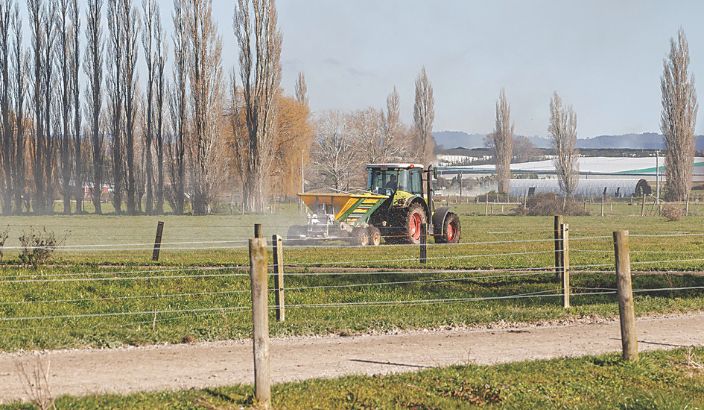Managing nitrogen fertiliser use


Timing and application rate of nitrogen fertiliser will help increase efficiency and minimise nitrogen loss.<em> Photo: DairyNZ</em>
DairyNZ
Nitrogen fertiliser is a valuable tool for pasture and crop growth in pastoral dairy farms, but it is essential that it is applied at the right time, in the right place and at the right rate. Optimising nitrogen fertiliser in this way can contribute to better environmental outcomes and more profitable feed. Creating an annual plan for nitrogen fertiliser use can help maximise the response rate and improve efficiency of use. A plan should consider pasture growth needs, soil conditions, and the cost of growing and harvesting. Timing and application rate of nitrogen fertiliser will help increase efficiency and minimise nitrogen loss.
Summer (December-February)
When nitrogen applications are done in early summer, it can stimulate the development and growth of new ryegrass tillers. Nitrogen applications boosted tillering by 37 percent, with an extra 800 kg DM/ha and 66 kg MS/ha produced from December to April after split applications of 100kg N/ha was applied.
During summer clover is fixing nitrogen in the soil, which means mineral nitrogen is likely available. Nitrogen is therefore unlikely to be a limiting factor in pasture growth. If soil tests show nitrogen to be a limiting factor, nitrogen fertiliser applications need to be made before moisture and temperatures also become limiting factors. For farms with irrigation available, using urease-coated fertiliser can reduce the risk of volatilisation to the atmosphere which occurs in hot and windy conditions.
Autumn (March-April)
Nitrogen has a role in restoring pasture cover after summer or autumn dry periods. After a dry summer, there is normally a considerable pool of nitrogen already in the soil, although sometimes a lot of this nitrogen is unavailable for plant uptake due to immobilisation. In other years, soil moisture is quickly restored through significant rain events that can wash available soil nitrogen below the plant root zone, especially in free-draining soils. It is therefore important to time fertiliser applications well so that plants receive nitrogen while the soil processes recover, and nitrogen doesn’t become a limiting factor for pasture growth. Responses to nitrogen applied in autumn are variable from 4:1 to 10:1, or about 40 days.
There are potential risks when applying nitrogen during this period, such as adding more nitrogen to the pool of nitrogen that is subject to drainage and leaching during winter. Nitrogen fertiliser should be applied before the soil temperature drops below 7°C so that plant uptake occurs.
Another risk is pasture growth rates going into winter exceeding normal levels once the pool of soil nitrogen accumulated during the dry period is mobilised. Adding to the large pool of soil nitrogen in the autumn increases the risk of nitrate poisoning in late autumn and winter, especially when grazing new grass and annuals.
